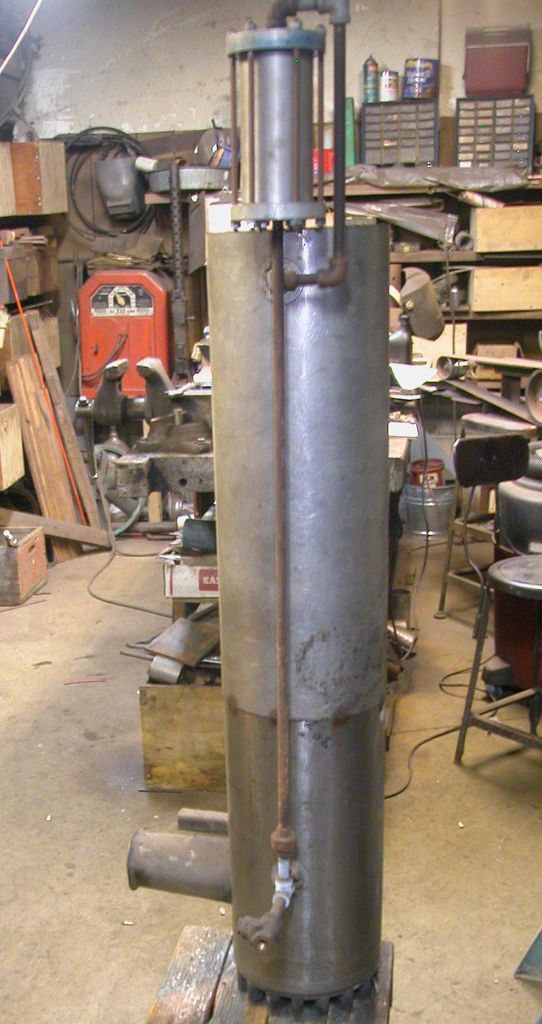I have not posted on this forum since first starting this thread many years ago. I find that my perspectives have changed little. I still believe a properly designed small steam engine system can be objectively superior to a small wood gas engine system. Scale and application are important considerations. I’m considering a small system suitable for off grid residential combined heat and power.
So, I started a project a couple years back to assemble a small scale steam engine system. I have to work slowly as my resources are very limited. I’m currently testing a monotube steam generator that shows good performance. I’ve operated it up to 1200 psig and 1000F so far. But the expanders I have planned will be limited to 500 psig and no more than about 800F.
The steam generator is part of a rig designed to test different expanders (all will be variants of single-acting uniflow). It includes a feed pump, steam generator (with propane burner), oil pump, condenser, crankcase, and crankshaft load. I am using propane for convenience. But I previously assembled and tested a small wood gasification furnace that showed good results (high temperature, clean burn, and precise control over a range of roughly 15,000 BTU/hr up to about 50,000 BTU/hr). It used wood chips and wood chunks up to about 2" across.
I will be testing the steam generator over the next couple of months before I start assembling the first expander. There is no timeline as my time and other resources are so limited. Also, I can’t provide specifics about the project. But I will note that my steam generator design was extraordinarily simple to assemble - and it was LOW cost. The most expensive part by far was the 1/4" 316SS tubing coil that I used to form the heat exchanger.
So far, my designs have proven out. I can only hope one of the expander designs prove out as well. But if it does, then I have high confidence I will be able to assemble a fully functional prototype steam power plant. Note the design goals for my system include low cost with minimal fabrication (I am repurposing existing mass produced components were practical), compact and portable (the entire system mounts to a roll cage with casters - about the size and weight of a typical 5 KW portable gas genset including furnace), and mechanical simplicity with ease in repairs.
Goal is 18-20% cycle efficiency (i.e. meaning 18-20% of the energy added to the feed water to make steam is converted to shaft work) and 90% efficiency in the steam generator - so 16-18% brake thermal efficiency with 2-3 shaft hp. Oh, and I also have a good diesel/waste oil burner design I will eventually try out.
If those on the forum have sincere interest, then I will share any material progress.





